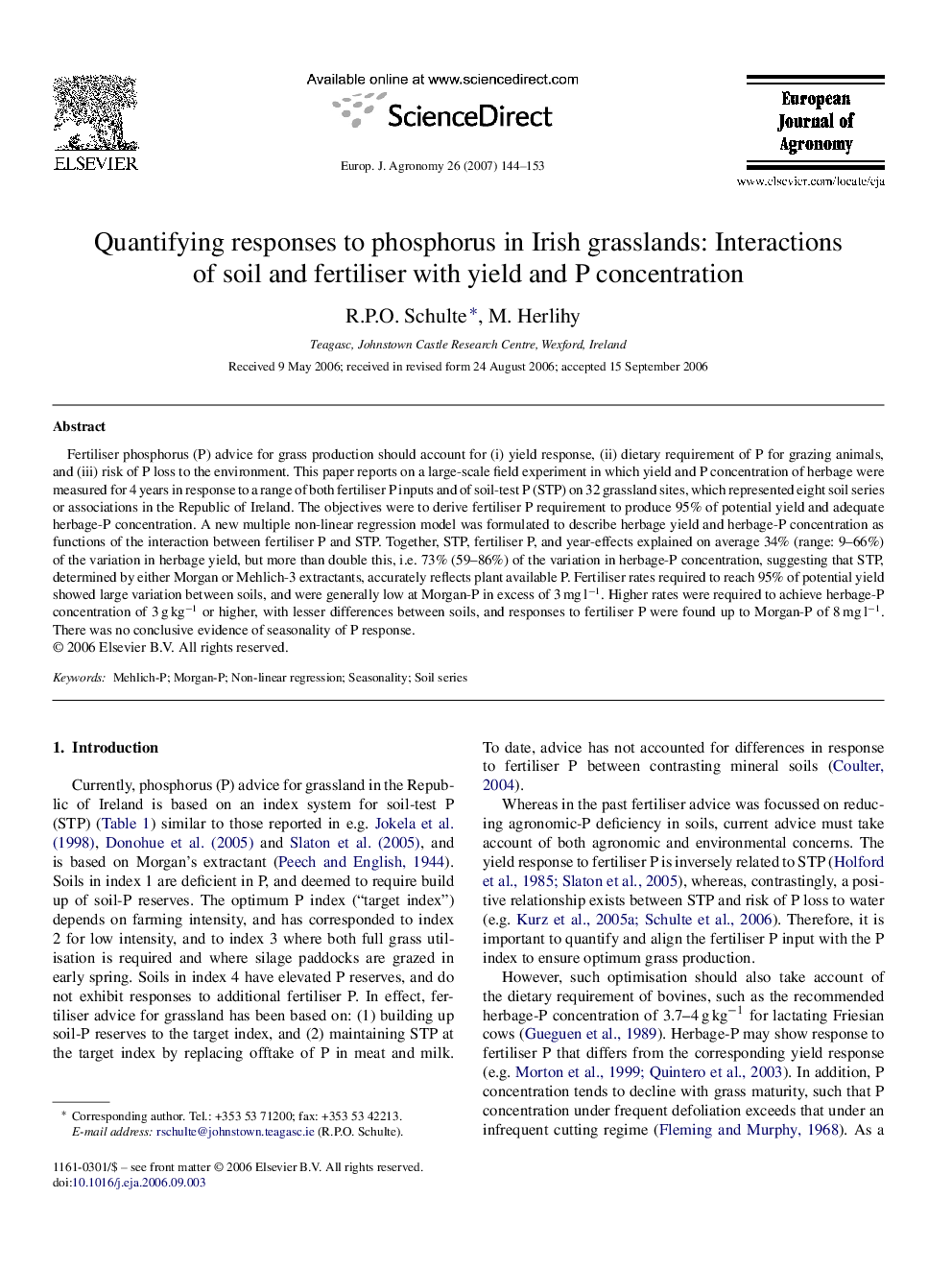| Article ID | Journal | Published Year | Pages | File Type |
|---|---|---|---|---|
| 4509699 | European Journal of Agronomy | 2007 | 10 Pages |
Fertiliser phosphorus (P) advice for grass production should account for (i) yield response, (ii) dietary requirement of P for grazing animals, and (iii) risk of P loss to the environment. This paper reports on a large-scale field experiment in which yield and P concentration of herbage were measured for 4 years in response to a range of both fertiliser P inputs and of soil-test P (STP) on 32 grassland sites, which represented eight soil series or associations in the Republic of Ireland. The objectives were to derive fertiliser P requirement to produce 95% of potential yield and adequate herbage-P concentration. A new multiple non-linear regression model was formulated to describe herbage yield and herbage-P concentration as functions of the interaction between fertiliser P and STP. Together, STP, fertiliser P, and year-effects explained on average 34% (range: 9–66%) of the variation in herbage yield, but more than double this, i.e. 73% (59–86%) of the variation in herbage-P concentration, suggesting that STP, determined by either Morgan or Mehlich-3 extractants, accurately reflects plant available P. Fertiliser rates required to reach 95% of potential yield showed large variation between soils, and were generally low at Morgan-P in excess of 3 mg l−1. Higher rates were required to achieve herbage-P concentration of 3 g kg−1 or higher, with lesser differences between soils, and responses to fertiliser P were found up to Morgan-P of 8 mg l−1. There was no conclusive evidence of seasonality of P response.
